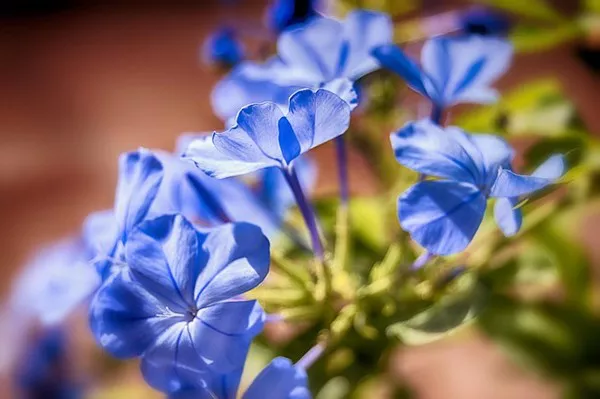Nature has always been a source of inspiration and healing for humanity, offering solace and comfort in times of distress. Among the myriad elements that nature provides, flowers stand out for their symbolic significance and therapeutic properties. Throughout history, various cultures have associated specific flowers with healing, both physically and emotionally. In this article, we will delve into the profound symbolism of flowers and explore their therapeutic potential in promoting well-being and recovery.
Historical Significance
The use of flowers for healing dates back centuries, with evidence of their medicinal properties found in ancient civilizations. The ancient Egyptians, for example, revered the blue lotus for its symbolic connection to the sun and believed in its ability to promote spiritual awakening and healing. Similarly, in traditional Chinese medicine, flowers such as chrysanthemums were used to create remedies for various ailments, emphasizing the holistic approach to health that includes the mind, body, and spirit.
Symbolism of Healing Flowers
Flowers have the remarkable ability to convey profound emotions and messages without uttering a single word. Each bloom carries a unique symbolism, and many are associated with healing and restoration. One such flower that has universally symbolized healing is the lavender.
Lavender, often referred to as the “herb of tranquility,” is renowned for its calming and soothing properties. The gentle fragrance of lavender has been linked to reducing stress and anxiety, making it a popular choice for aromatherapy and relaxation practices. Additionally, lavender is known for its anti-inflammatory and antiseptic qualities, further emphasizing its healing attributes.
The lotus flower is another symbol of healing that transcends cultural boundaries. In Eastern philosophies, the lotus represents purity, enlightenment, and rebirth. Growing from the mud and emerging pristine and beautiful, the lotus serves as a metaphor for overcoming adversity and finding inner peace. This symbolism aligns with the idea that healing often involves a journey of transformation and self-discovery.
Therapeutic Properties of Healing Flowers
Beyond their symbolic significance, many flowers boast tangible therapeutic properties that contribute to physical and emotional well-being. The field of aromatherapy, for instance, harnesses the power of essential oils derived from flowers to promote healing and balance. Essential oils extracted from flowers like chamomile, rose, and jasmine are renowned for their calming, uplifting, and mood-enhancing effects.
Chamomile, with its delicate white flowers, has been used for centuries as a natural remedy for promoting relaxation and alleviating insomnia. The gentle aroma of chamomile is believed to have a sedative effect on the nervous system, making it an ideal choice for those seeking a natural way to unwind and de-stress.
Rose, often associated with love and beauty, also possesses therapeutic properties that extend beyond its aesthetic appeal. Rose essential oil is recognized for its ability to reduce anxiety and improve mood. The sweet and floral scent of rose has a comforting effect on the mind, making it a valuable ally in promoting emotional well-being.
Jasmine, with its intoxicating fragrance, is celebrated for its uplifting and aphrodisiac qualities. In addition to its mood-enhancing properties, jasmine essential oil has been studied for its potential to reduce stress levels and improve sleep quality. Incorporating jasmine into a wellness routine can provide a sensory escape, fostering a sense of calm and relaxation.
See also What Flower Represents Strength
Flowers in Healing Environments
The positive impact of flowers on healing is evident not only in traditional medicine and aromatherapy but also in the design of healing environments. Hospitals, clinics, and wellness centers increasingly incorporate floral arrangements to create spaces that promote a sense of calm and optimism.
Studies have shown that patients in hospital rooms adorned with flowers or nature-inspired elements experience lower levels of pain, anxiety, and stress. The visual presence of flowers has been linked to improved mood and faster recovery rates. In addition to their aesthetic appeal, flowers contribute to a holistic approach to healing, addressing the emotional and psychological aspects of well-being.
Cultivating Healing Gardens
The concept of healing gardens, designed to provide therapeutic benefits to individuals facing physical or mental health challenges, has gained prominence in healthcare and wellness design. These gardens often feature a diverse array of flowers chosen for their sensory appeal, colors, and healing properties.
The act of gardening itself has been recognized as a therapeutic activity that promotes physical activity, reduces stress, and enhances overall well-being. Incorporating healing flowers into these gardens creates a multisensory experience, engaging sight, smell, and touch to evoke positive emotions and support the healing process.
Conclusion
The symbolic significance and therapeutic properties of flowers have made them powerful allies in the pursuit of healing and well-being. From ancient civilizations to modern healthcare practices, the connection between flowers and healing remains deeply rooted in human history. Whether utilized in aromatherapy, integrated into healing environments, or cultivated in healing gardens, flowers continue to inspire hope, provide comfort, and contribute to the holistic journey of recovery. As we navigate the complexities of modern life, the timeless allure of healing flowers serves as a reminder of the enduring power of nature to nurture both body and soul.


